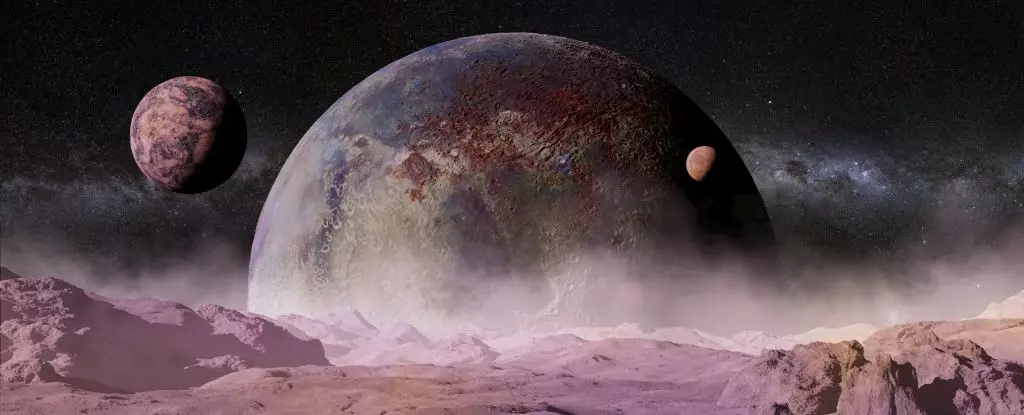In the vast, dark expanse of our galaxy, an intriguing class of celestial objects challenges long-standing notions of planetary formation and celestial hierarchy. These are the free-floating planetary-mass objects—rogue worlds that drift through space without the tether of a parent star. Once considered mere cosmic curiosities, recent observations suggest they might harbor the potential to develop complex systems akin to miniature versions of our Solar System. This possibility opens a new frontier in astrophysics, prompting us to reconsider preconceived ideas about where planetary systems can originate.
What makes these rogue planets extraordinary is their capacity for self-organization. Despite being unbound from stars, they are not barren or inert. Instead, they possess disks of material—composed of dust, crystalline silicates, and hydrocarbons—that resemble the protoplanetary disks around newborn stars. Such disks, observed by cutting-edge telescopes like the James Webb Space Telescope (JWST), hint at the fascinating possibility that these objects are not simply cosmic wayfarers but are capable of nurturing their own satellites, rings, and perhaps even small planets.
Observational Breakthroughs and Their Implications
The JWST’s recent imaging of approximately eight free-floating objects in the Orion nebula has provided unprecedented insights. Researchers found that these bodies, each weighing between five and ten times the mass of Jupiter, are surrounded by rich disks containing crystalline silicate grains—markers of dust processing and growth. The presence of these grains signifies that, even in their solitary state, such objects possess the raw materials necessary for planetary assembly.
This discovery profoundly challenges traditional worldview, which primarily associates planet formation with stars. The evidence suggests that the process could occur in a scaled-down environment, where the mass and size are roughly a hundred times smaller than Earth’s Sun and its planets. If dust coagulation, crystallization, and disk dynamics function similarly on these minimal scales, it raises the tantalizing prospect that some of these rogue worlds could eventually develop systems of moons and rings—a true planetary mini-systems sans a star.
Furthermore, this raises pivotal questions for astrophysics: Are these structures transient, or could they become stable, long-lived systems? Do they acquire moons through accretion or capture? The current observations act as a catalyst for future investigations, pushing us to explore how planetary systems may arise in unconventional environments devoid of stellar influence.
The Broader Significance and Future Outlook
Understanding the formation of systems around free-floating objects has implications beyond mere curiosity. It challenges the paradigm of planet formation itself, suggesting that such processes might not be exclusive to star-bound systems. If these objects can indeed develop moons or even ring systems, the potential for a vast, previously unaccounted-for population of complex celestial bodies emerges.
From a philosophical standpoint, these discoveries ignite a sense of wonder about the diversity of planetary architectures possible in our universe. Could worlds like these harbor life-supporting environments, or are they simply cosmic testaments to nature’s versatility? While evidence remains preliminary, the notion that celestial bodies thought to be isolated and simple may possess complex sub-structures encourages scientists to rethink the limits of planetary genesis.
In practical terms, future missions and observations will be critical in confirming whether these disks can sustain moon formation or if they are merely remnants of initial dust clouds. The technological advancements represented by JWST provide the tools necessary to peel back these cosmic mysteries, but much remains to be explored. The possibility that a rogue planet could evolve a system comparable to Jupiter’s or Saturn’s—entirely independent of a star—emboldens the scientific community to look beyond conventional frameworks and push the boundaries of our understanding.
The universe, it seems, harbor secrets that defy expectations, and these solitary wanderers might be more than just driftwood in the cosmic sea—they could be the birthplace of miniature worlds, challenging our notions of planetary genesis in ways previously thought impossible.

